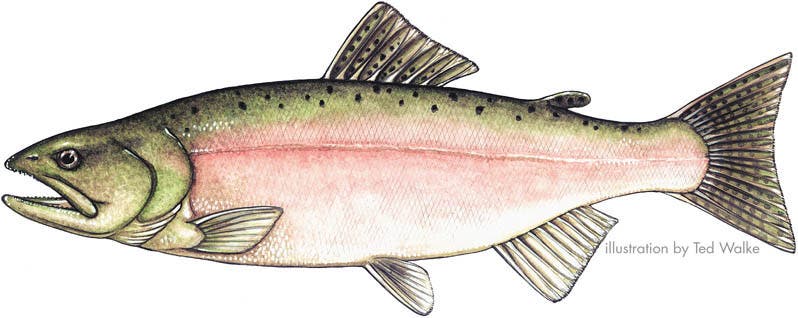The effects of carbon dioxide (CO2) emissions are great and long reaching – a new study has found that pink salmon in the Pacific Ocean are threatened by increasing ocean acidification.
When we emit carbon dioxide, it doesn’t all go to the atmosphere; an estimated 30–40% of the carbon dioxide released by humans into the atmosphere dissolves into oceans, but also rivers and lakes, where it increases the acidity of the water. This phenomenon is called acidification and it has a range of possibly harmful consequences, such as depressing metabolic rates and immune responses in some organisms, and causing coral bleaching. It also causes decreasing oxygen levels as it kills off algae. Now, University of British Columbia researchers added another problem related to freshwater acidification: it’s wiping off pink salmon.
Pink salmon is the smallest and most common salmon species in the Pacific. In 2010, the total harvest was some 260 million fish, corresponding to 400,000 tonnes. The researchers examined the fish for 10 weeks, from when they were inside the eggs, in fresh water, until they migrated in the open ocean. They split the fish into two groups, one which was raised in water like the one we have today, and one which lived in water containing levels which could be present in freshwater sources a century from today. They found that the salmon raised in acidic water (today’s water) were not able to smell their surroundings as well as those in the control group, which means they had a much harder time avoiding predators and finding their way in the water.
This is likely happening across all salmon species, biologists note.
“Damage done by acidification in fresh water in pink salmon could occur in all other salmonids”, Colin Brauner, a co-author at the University of British Columbia, told Reuters. The findings were published in the journal Nature Climate Change.
The problem is that we don’t really understand freshwater acidification that well, and we haven’t even studied it properly – most efforts were focused on oceans.
“Most of the work on acidification has been in the ocean, yet 40 percent of all fish are freshwater. We need to think about how carbon dioxide is affecting freshwater species. We found that freshwater acidification affects pink salmon and may impact their ability to survive and ultimately return to their freshwater spawning grounds,” Colin Brauner from the University of British Columbia said.
Journal Reference: Michelle Ou et al – Responses of pink salmon to CO2-induced aquatic acidification. Nature Climate Change (2015) doi:10.1038/nclimate269










